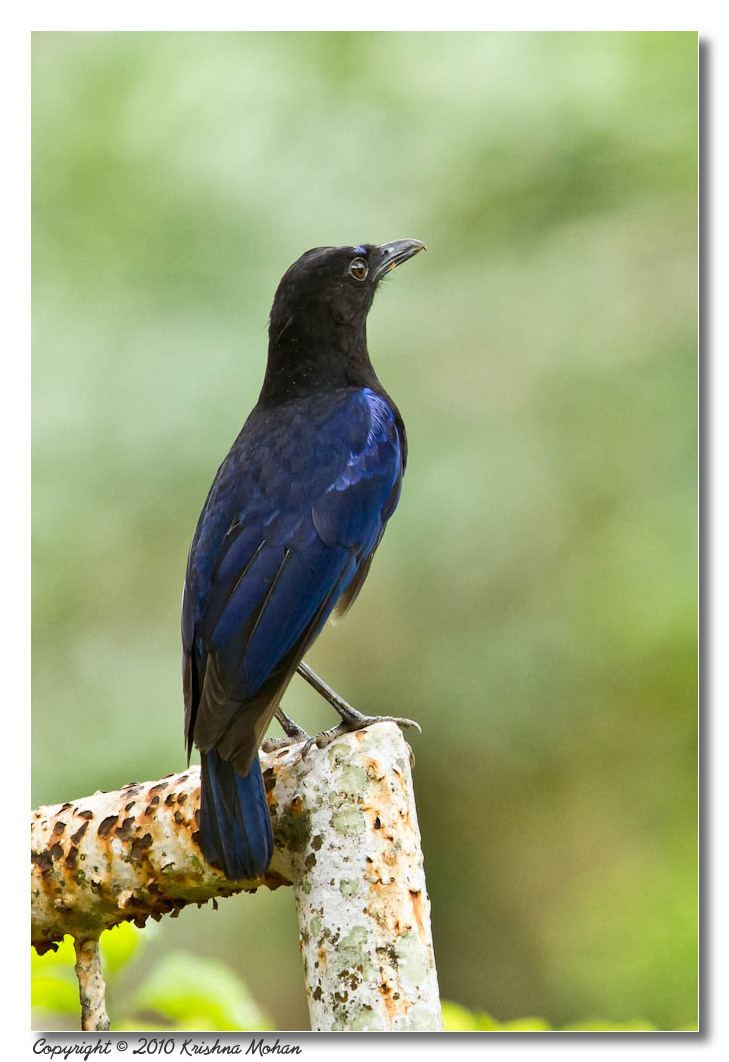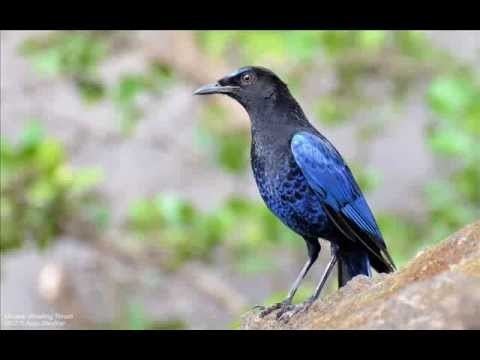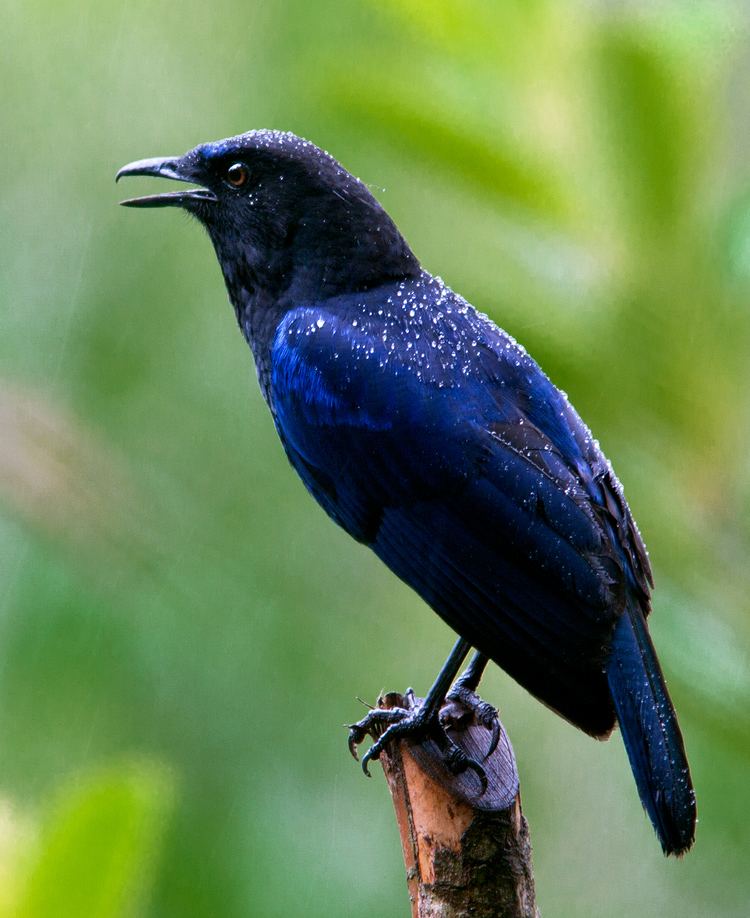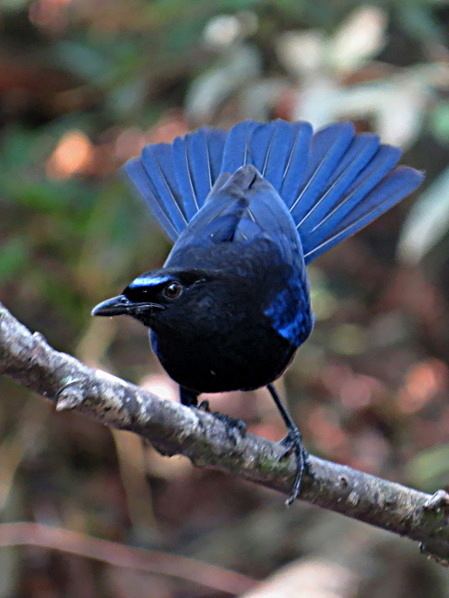Class Aves Family Muscicapidae Scientific name Myophonus horsfieldii | Phylum Chordata Order Passeriformes Genus Myophonus Rank Species | |
 | ||
Similar Whistling thrush, Nilgiri blue robin, Blue‑capped rock thrush, Indian blue robin, Indian blackbird | ||
Malabar whistling thrush
The Malabar whistling thrush (Myophonus horsfieldii) is a whistling thrush in the family Muscicapidae. They are also known locally by the name of whistling schoolboy for the whistling calls that they make at dawn that have a very human quality. The species is a resident in the Western Ghats and associated hills of peninsular India including central India and parts of the Eastern Ghats.
Contents

Malabar whistling thrush
Description

This large thrush appears blackish with shiny patches of blue on the forehead and shoulders. The blue becomes visible only in oblique lighting. The bill and legs are black. The sexes are indistinguishable and juveniles are more brownish and lack the blue forehead.
Distribution and habitat

The species is found all along the Western Ghats south of the Surat Dangs. They are also found along the Satpura range to northwestern Orissa (Surguja). Also locally in the Eastern Ghats. Populations are not migratory but have been known to disperse widely in winter. An individual that was ringed in Mahabaleshwar in the summer of 1972 was recovered in the winter of 1976 in Sampaje, Coorg. Although historically recorded twice from Mount Abu, more recent surveys have not recorded the bird or suitable habitat.
Malabar whisting thrushes are usually found in dark undergrowth and dense riverine forest.
Behaviour and ecology

The species is omnivorous, eating a wide range of insects, crabs, frogs, earthworms and berries. They are usually seen singly or in pairs.

This is a bold species and is often found close to human habitation. The male sings its varied and melodious whistling song from trees during summer. They may sing for a long time around dawn but at other times of the day they often utter sharp single or two note whistles. They were once popular as cage birds, with the ability to learn entire tunes. They bathe frequently in water usually in the mornings and evenings but at midday during hot weather.
Nesting

The birds breed from March to December and begins with the Monsoons. Courtship involves chasing flights and calling. They usually nest in a cavity on a stream side but will sometimes make use of nearby buildings. In a study of nest-site selection in the Silent Valley area, a total of 21 nests were found mostly on rocks along the edge of streams and one each in a tree hole and inside an abandoned building. The nest is a cup made of moss, bamboo roots and grass, with a broad base and tapering towards the top. The base of the nest appeared to be cemented to the rock with mud. Mean nest height was 14.8 cm and depth 7.4 cm. The mean outer width and inner width were 21.5 cm and 13.1 cm respectively. Mean height from the ground was 125.8 cm. Most nest sites were about 6 m from water with 60% rock cover. The nests were mostly fully concealed and nesting success was directly related to it. The birds show high site fidelity; occupying and nesting near their previous season nests. The clutch consists of 2 to 4 eggs. The eggs are pale salmon pink with speckling. The eggs are incubated for about 16 or 17 days by both the male and female.
